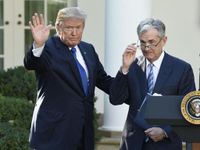As the Reserve Bank of Australia (RBA) prepares for its May board meeting, the latest economic indicators suggest that mortgage holders may be in for some much-needed relief. Recent data from the Australian Bureau of Statistics (ABS) reveals a slight uptick in unemployment to 4.1 percent, yet analysts argue that this will not significantly influence the RBA's decision on interest rates.
In its April monetary policy meeting, the RBA expressed ongoing concerns about the tight labor market, noting that it could lead to higher inflation than anticipated. However, with wage growth stagnating, economists believe that the current conditions present a favorable environment for potential rate cuts.
Diana Mousina, an economist at AMP, stated, "While the unemployment rate remains low, the slowing in wages (and therefore inflation) makes us confident that the strength in the labor market should not deter further rate cuts." This sentiment is echoed by BDO economics partner Anders Magnusson, who suggested that the unemployment figures are unlikely to sway the RBA’s cash rate decision.
Magnusson elaborated, "I think a cut in May is slightly more likely than a hold, but a surprise in the forthcoming quarterly CPI release could change that." Major banks, including the Commonwealth Bank of Australia (CBA), predict a 25 basis point cut in the RBA’s interest rates during the May meeting.
The backdrop of the US-China trade war has raised concerns about a global economic slowdown, further tipping the scales in favor of a rate cut. Greg Jericho, chief economist at The Australia Institute, emphasized the urgency, stating, "Waiting until nearly the end of May is far too long. The RBA should be nimble enough to realize that the tariffs levied by the USA are an unprecedented move that is already sending shockwaves through the world’s economy." He urged the RBA to act quickly and cut rates to prevent further economic damage.
However, the exact impact of the trade war on Australia remains uncertain. Mousina pointed out that exports to the US account for less than 5 percent of total goods exports, suggesting that the potential fallout may not be as severe as some fear. She noted, "The impact to China from US tariffs may also not be as disastrous as assumed as China seems to be refocusing on its other markets and stimulating its economy." This perspective indicates that the RBA may not need to rush into drastic rate cuts just yet.
Meanwhile, the CBA has released forecasts predicting that headline inflation will fall to approximately 2.3 percent, nearing the bottom of the RBA’s target range. The bank anticipates a 0.6 percent increase in the trimmed mean inflation rate for the upcoming quarter, leading to an annual figure of around 2.8 percent, which also remains within the target band.
CBA senior economist Stephen Wu remarked, "Following the March labor force survey, we think a 25 basis point rate cut in May is still more likely than not if the trimmed mean CPI prints in line with the RBA’s forecast." If the CBA's predictions hold true, homeowners with a $600,000 mortgage could see their monthly repayments decrease by $91.
Despite holding the official cash rate steady at 4.10 percent during the April meeting, the RBA indicated that the May meeting would be an opportune time to reassess monetary policy based on new data regarding inflation, wages, and economic activity.
In mid-April, the National Australia Bank (NAB) had predicted a double rate cut at the upcoming RBA meeting, largely due to the turmoil stemming from US tariffs. However, the situation shifted when US President Donald Trump announced a 90-day pause on the tariffs, complicating the outlook for Australian monetary policy.
Westpac also forecasts a 25 basis point cut in May, which would lower the cash rate to 3.85 percent. Senior economist Michael Gordon noted that while the March quarter inflation figures were expected to tick up slightly more than anticipated, they still align with Westpac's forecasts. He stated, "We expect that headline inflation will remain within the target band over the year ahead, albeit on the higher side – we are forecasting a peak of 2.8 percent in the December 2025 quarter."
Westpac economist Ryan Wells added that the employment figures, which showed an increase of 32,000 jobs, were unlikely to influence the RBA's decision significantly. He explained, "Measures of labor market slack were therefore little changed, with the unemployment rate increasing only 0.01 percentage points. Overall, the RBA are likely to see this data as broadly in line with their expectations, still reflecting a degree of ‘tightness’ relative to full employment."
As the RBA approaches its May meeting, the interplay of domestic economic indicators and international trade tensions will be crucial in shaping its decision on interest rates. With economists and banks largely predicting a rate cut, homeowners are hopeful for relief from rising mortgage costs.



